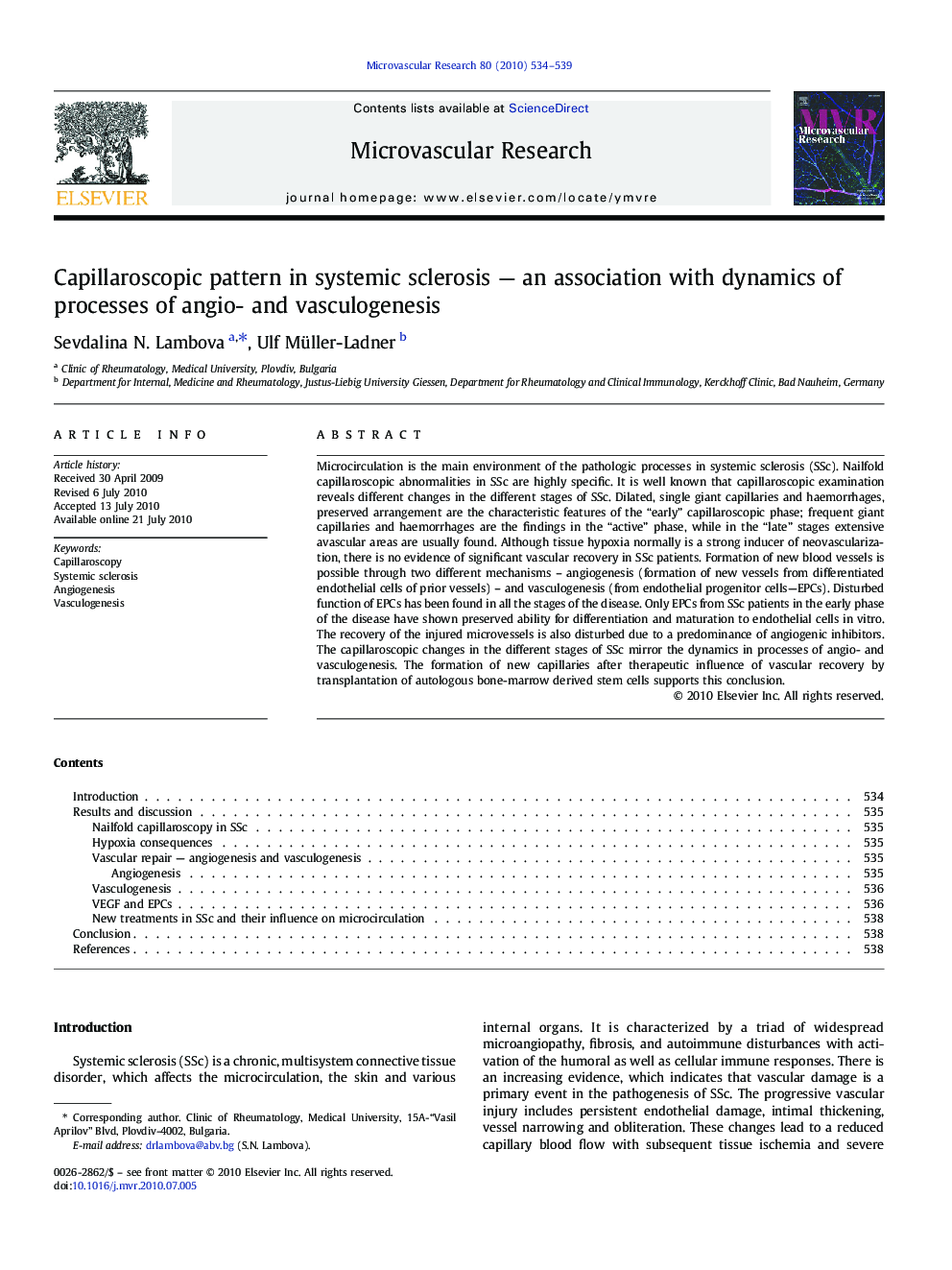| Article ID | Journal | Published Year | Pages | File Type |
|---|---|---|---|---|
| 1995142 | Microvascular Research | 2010 | 6 Pages |
Мicrocirculation is the main environment of the pathologic processes in systemic sclerosis (SSc). Nailfold capillaroscopic abnormalities in SSc are highly specific. It is well known that capillaroscopic examination reveals different changes in the different stages of SSc. Dilated, single giant capillaries and haemorrhages, preserved arrangement are the characteristic features of the “early” capillaroscopic phase; frequent giant capillaries and haemorrhages are the findings in the “active” phase, while in the “late” stages extensive avascular areas are usually found. Although tissue hypoxia normally is a strong inducer of neovascularization, there is no evidence of significant vascular recovery in SSc patients. Formation of new blood vessels is possible through two different mechanisms – angiogenesis (formation of new vessels from differentiated endothelial cells of prior vessels) – and vasculogenesis (from endothelial progenitor cells—EPCs). Disturbed function of EPCs has been found in all the stages of the disease. Only EPCs from SSc patients in the early phase of the disease have shown preserved ability for differentiation and maturation to endothelial cells in vitro. The recovery of the injured microvessels is also disturbed due to a predominance of angiogenic inhibitors. The capillaroscopic changes in the different stages of SSc mirror the dynamics in processes of angio- and vasculogenesis. The formation of new capillaries after therapeutic influence of vascular recovery by transplantation of autologous bone-marrow derived stem cells supports this conclusion.
